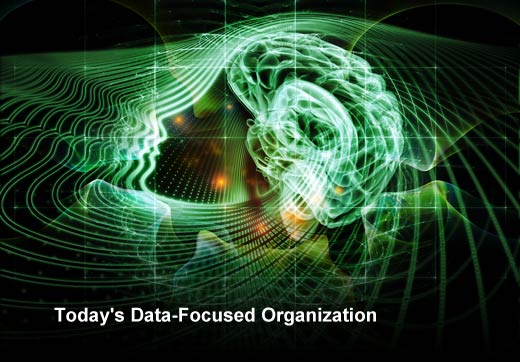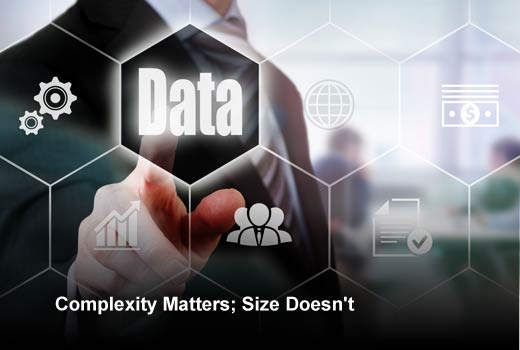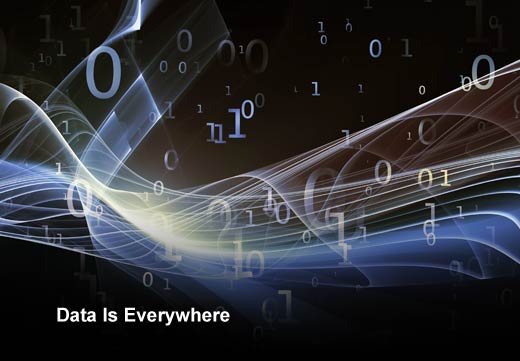Data-driven enterprises do exist today. These organizations capture and reinforce the value of their data by constantly surrounding it with context — describing where it’s from, who has access, and how it is being and has been used. Counter to conventional wisdom, these organizations empower people by securely, safely giving their employees direct access to data, as well as providing interactive dashboards and colorful visualizations. These companies incentivize data analysts, stewards and IT staff to collaborate clearly and efficiently, bringing significant benefits to the entire organization.
In this slideshow, Alation‘s CEO, Satyen Sangani, highlights the behaviors and common characteristics that help define and drive today’s most data-driven organizations.
Today’s Data-Focused Organization
Click through for seven characteristics of a data-driven organization, as identified by Alation’s CEO, Satyen Sangani.
Training
You can’t assume that everyone is born data literate. The most progressive data-driven organizations continuously educate analysts and non-analysts in how to use data correctly. This data literacy training ranges from understanding how key metrics are calculated all the way through to understanding regulatory requirements for using data.
Trash or Treasure?
One person’s data trash is another’s data treasure, and some of the treasure may actually be trash. Today, only about 12 percent of data in an organization is analyzed. Eighty-eight percent isn’t touched at all — though that portion could contain useful insights — often because the teams that store it and the groups that need it are in different parts of the organization. And some of the data sets that are used shouldn’t be, because they’re stale, noisy, or incorrectly calculated. Data-driven organizations break down the barriers of data siloes, and let people access useful data across divisional boundaries. At the same time, though, they insure that the real data garbage is marked or deleted. Finally, they zealously manage the quality of their data.
Complexity Matters; Size Doesn’t
You’d think that data-driven organizations would have exabytes of data. While more data is generally better, size matters only to a point. What really matters is the variety of the data. Are people asking questions in different business functions? Are they measuring cost and quality of service, instrumenting marketing campaigns or observing employee retention by team? If you’re just getting a month-end report on revenue and profit, you’re probably not data driven. If you’re only measuring the clicks on your website, your marketing team may be data driven, but the rest of your company probably isn’t.
Protected Data
Available data does not mean unprotected data. Nothing kills transparency like an information breach. Data-driven companies carefully guard their data from outside threats, while employing internal policies that restrict access to sensitive data while empowering analysts and decision makers to access the data they need; balance is key.
Data Is Everywhere
One would think that the data would be well organized and maintained — as in a library, where every book is stored in one place. In fact, most data-driven cultures are exactly the opposite. Data is everywhere — on databases, inside business intelligence tools, on file servers, and on reports on people’s PCs — all within the company walls. The key is knowing where the data is, not centralizing and confining it. Data catalogs really help address data chaos.
Freedom of Choice
Fast insights emerge from technological freedom-of-choice. Generally, the principal concern of people in data-driven businesses is the ability to get insights quickly. Forcing analysts to learn and use IT-defined models and centrally specified tools slows down analysts and data scientists (and makes them harder to attract and retain). In the most data-driven enterprises, the person answering the question gets to pick the tools used. While enterprise standards are important, self-service wins the day.
Data Flow
Data flows in every direction within an organization. Data should empower more junior employees to make decisions, while leaders often use data to communicate the rationale behind their decisions and to motivate action. Data should empower everyone to make decisions without having to consult managers three levels up — whether it’s showing churn rates to explain additional spend on customer services vs. marketing or showing revenues relative to competitors to explain increased spend on sales.










